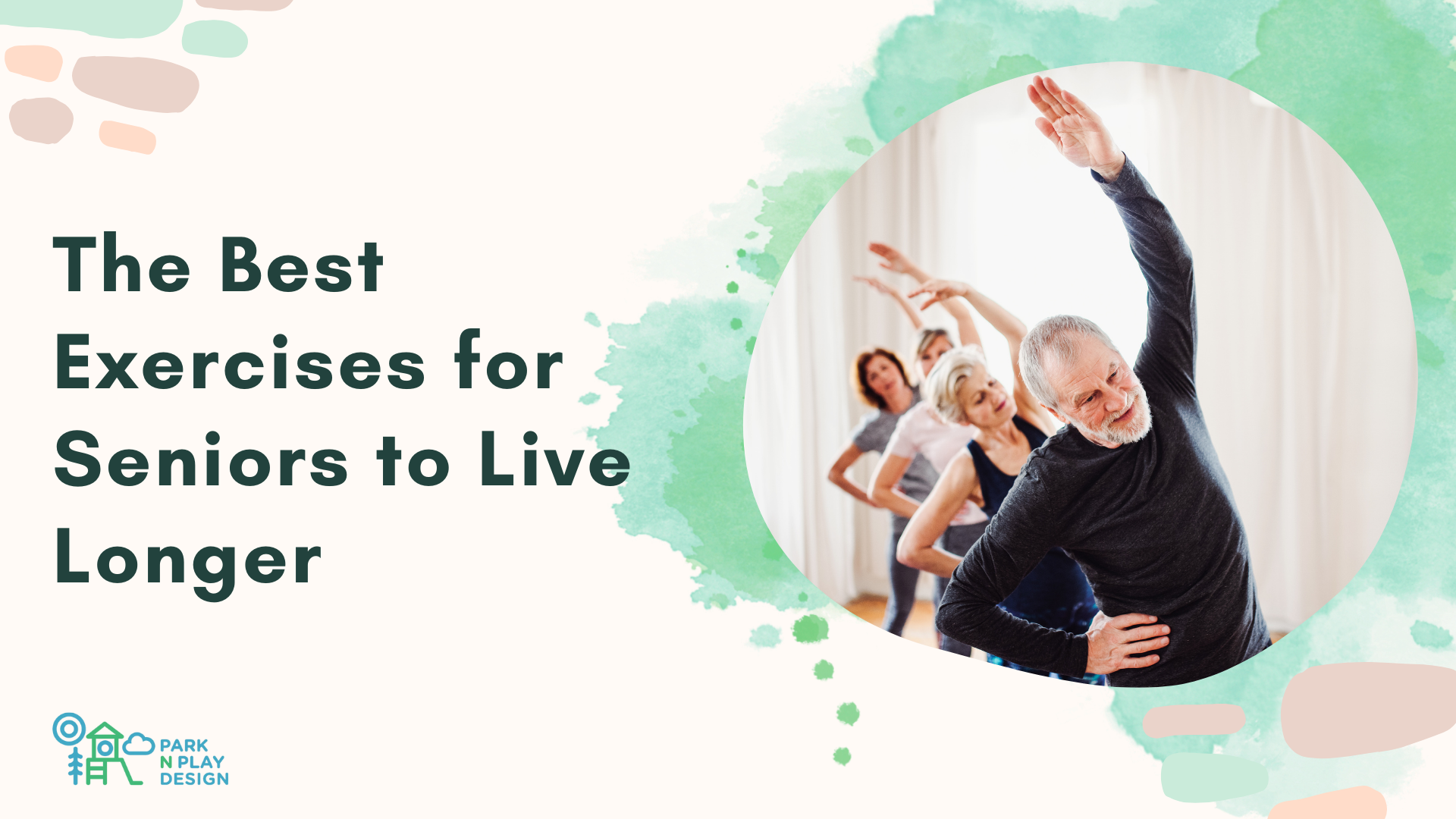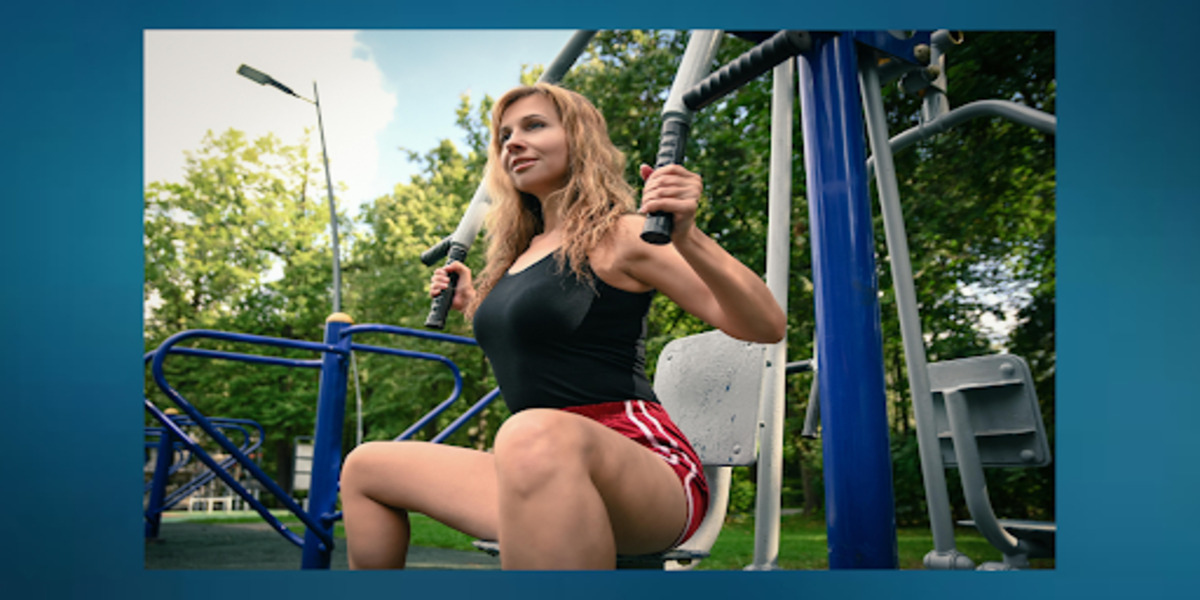The Best Exercises for Seniors to Live Longer
Discover the best exercises for seniors to live longer! Stay active, boost your health, and enjoy life with fun, easy workouts. Perfect for senior well-being!


Staying active in the senior years is crucial for enhancing longevity and quality of life. Regular exercise helps maintain physical health, boosts mental well-being, and supports independence, making it essential for seniors to stay engaged in physical activity.
This blog post will explore exercises especially beneficial for seniors, focusing on strength, flexibility, and cardiovascular health. By incorporating these exercises into their routine, seniors can enjoy a healthier, more active, and fulfilling life.
What Are the Health Benefits of Exercise for Seniors?

Exercise Promotes Independence
Regular exercise helps seniors maintain strength and mobility, allowing them to perform daily activities independently. Incorporating outdoor activities for seniors into their routine is a wonderful way to stay active and engaged with the natural environment. This fosters a sense of autonomy and confidence, making it easier to enjoy life to the fullest.
By staying active, seniors can retain their freedom and reduce the need for assistance in their everyday lives.
Improved Balance
Engaging in exercises that enhance balance reduces the risk of falls, which is crucial for seniors. Improved balance leads to excellent stability and mobility, making it easier to navigate daily tasks safely.
This increased stability helps seniors feel more secure in their movements, reducing the fear of falling and enhancing overall confidence.
Increased Energy
Exercise boosts energy levels by improving cardiovascular health and overall stamina, leading to a more dynamic and active lifestyle for seniors. This increased energy helps seniors stay engaged in their favorite activities, allowing them to maintain a higher level of participation in their daily lives.
With more energy, seniors can enjoy a more vibrant and fulfilling lifestyle, including participating in social events, pursuing hobbies, and attending family gatherings. The enhanced stamina from regular exercise improves physical health and contributes to a greater sense of well-being and happiness.
Overall, staying active through exercise empowers seniors to lead more enjoyable and enriched lives.
Disease Prevention and Management
Regular physical activity helps prevent and manage chronic diseases such as diabetes, heart disease, and arthritis. It also aids in maintaining a healthy weight, reducing the risk of obesity-related conditions.
By incorporating exercise into their daily routine, seniors can improve their overall health and reduce the likelihood of developing severe health issues.
Enhanced Brain Function
Exercise has been shown to improve cognitive function, memory, and mood. It stimulates the brain, promoting mental clarity and reducing the risk of cognitive decline.
By engaging in regular physical activity, seniors can enhance their mental sharpness, maintain better focus, and experience a more positive outlook.
The Best Exercises for Seniors
1. Strength Training
Strength training involves using resistance, such as weights or resistance bands, to build muscle and increase strength. This exercise is crucial for staying healthy and active as we age, as it helps counteract the natural decline in muscle mass and bone density.
Incorporating strength training exercises into your fitness routine can improve overall health and functionality. Here are some key benefits:
- Improves Muscle Mass: Helps keep muscles strong and prevents age-related muscle loss.
- Increases Bone Density: Strengthens bones, reducing the risk of fractures and osteoporosis.
- Boosts Metabolic Health: Enhances metabolism, aiding in weight management and overall health.
- Enhances Daily Activities: Makes everyday tasks more accessible and safer to perform.
- Reduces Injury Risk: Strengthens the body, lowering the chances of injuries.
Sample Exercises:
- Squat Curl Knee Lift: Combines squats with bicep curls to target multiple muscle groups.
- Shoulder Overhead Press: Strengthens the shoulders and improves upper body strength.
- Renegade Arm Row: Focuses on triceps, back, and shoulders.
- Bird Dog: Enhances core stability and balance.
2. Flexibility and Stretching
Flexibility exercises are essential for maintaining a healthy range of motion in your joints and muscles. As we age, our muscles naturally become stiffer and less elastic, making it harder to move freely and increasing the risk of injuries.
By incorporating regular stretching exercises into your routine, you can keep your muscles and joints limber, enhance overall mobility exercises, and make everyday activities more comfortable. Here are some key benefits:
- Increases Range of Motion: Helps you move more freely and comfortably.
- Reduces Injury Risk: Makes muscles and joints more resilient to strain.
- Aids in Recovery: Helps muscles recover faster after physical activity.
- Keeps Muscles and Joints Limber: Maintains overall muscle and joint health.
Sample Stretching Exercises:
- Quad Stretch: This stretch targets the front of the thigh. Hold one foot with the opposite leg, keeping your knees together.
- Standing Hamstring Stretch: Stretches the back of the legs.
- Chest and Shoulder Stretch: Opens up the chest and shoulders.
- Upper Back Stretch: This stretch relieves tension in the upper back. Sit with your feet flat on the floor and gently pull one arm across your chest, holding it with the opposite hand.
3. Cardiovascular Exercises
Cardiovascular exercises, often referred to as aerobic exercises, are activities that raise your heart rate and keep it elevated for an extended period. They are crucial for maintaining a healthy heart and lungs, improving circulation, and boosting overall stamina.
As we age, keeping our cardiovascular system in good shape becomes even more important for sustaining energy levels, managing weight, and reducing the risk of chronic diseases. Here are some key benefits:
- Enhances Heart Health: Strengthens the heart and improves circulation.
- Increases Stamina: Boosts energy levels and endurance.
- Helps with Weight Management: Burns calories and supports a healthy metabolism.
- Vital for Overall Fitness: Supports all aspects of physical health and well-being.
Sample Cardiovascular Exercises:
- Walking: A low-impact exercise perfect for maintaining cardiovascular health.
- Elliptical Workouts: Low-impact and effective for joint health and overall fitness.
- Cycling: Enhances leg strength and cardiovascular endurance.
4. Balance and Stability Exercises
Balance and stability exercises are vital for maintaining independence and preventing falls, especially as we age. These exercises help improve coordination, strengthen core muscles, and enhance overall body awareness.
Our balance can naturally decline as we age, increasing the risk of falls and related injuries. Incorporating balance and stability exercises into your routine can improve your mobility and confidence in daily activities.
Here are some key benefits:
- Reduces the Risk of Falls: Enhances coordination and stability, preventing accidents.
- Improves Overall Mobility: Makes movement easier and more controlled.
- Essential for Maintaining Independence: Supports the ability to perform daily activities safely and confidently.
- Strengthens Core Muscles: Provides a solid foundation for all types of physical activity.
Sample Balance Exercises:
- Knee Thrusters: Improves balance and core strength.
- Glute Bridge: Strengthens the glutes and hamstrings while enhancing stability.
- Kneeling Shoulder Tap Push-Up: Targets the upper body and core, enhancing stability.
For older adults, knowing how much physical activity to incorporate into your fitness journey is crucial for safety and effectiveness. Regular practice of these exercises can significantly improve balance and overall physical health, contributing to a more independent and active lifestyle.
Exercises Seniors Should Avoid
While many exercises are beneficial, certain activities can pose significant risks for seniors due to their high impact or complex movements. It's important to recognize these risks and choose safe and suitable exercises and equipment for seniors that accommodate aging bodies.
Avoiding potentially harmful exercises helps prevent injuries and ensures a safer, more effective fitness routine. Here are some types of exercises seniors should steer clear of:
- High-Impact Activities: Running and jumping can put excessive strain on joints and increase the risk of injury.
- Heavy Weightlifting: Lifting weighty weights can lead to muscle strain or joint damage.
- Rapid or Complex Movements: Exercises requiring quick, intricate movements can cause falls or injuries due to decreased coordination and balance.
Always consult a healthcare provider before starting a new exercise routine to ensure it is safe and appropriate for your health needs and fitness level.
Elevate Your Senior Living Experience with Park N Play Design's Fitness Solutions

Incorporating these exercises into a senior's routine offers numerous benefits, including improved strength, flexibility, cardiovascular health, and balance. Starting slowly and gradually increasing activity levels is essential to avoid injury and ensure long-term success.
Regular physical activity enhances physical well-being and supports mental health and overall quality of life. For those looking to improve their fitness environment, consider Park N Play Design for therapeutic fitness products, cognitive activity panels, shade and site furnishings, and inter-generational activities well suited for senior living facilities.
Embracing a well-rounded exercise regimen can help seniors live a healthier, more active, and fulfilling life.
FAQs
What exercise makes you live the longest?
Regular aerobic exercises such as walking, cycling, and swimming are linked to increased longevity, as these activities improve cardiovascular health, boost metabolism, and enhance overall well-being. Consistency in an exercise program that includes these activities promotes a healthy heart, reduces the risk of chronic diseases, and supports a longer, more active life.
What is the most beneficial exercise for seniors?
Strength training is particularly beneficial for seniors, as it helps maintain muscle mass, improves bone density, and enhances metabolic health, contributing to better overall physical function and independence. Combining strength training with flexibility exercises and balance activities ensures a well-rounded fitness routine that supports healthy aging.
How long should a 70-year-old exercise?
A 70-year-old should aim for at least 150 minutes of moderate-intensity aerobic activity, such as brisk walking, per week and muscle-strengthening activities two or more days a week. It's essential to start slowly, listen to the body, and gradually increase intensity and duration to ensure safety and effectiveness.











